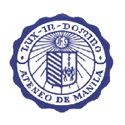|
Solution / Formula 3:
Given: n = 150, sample size
p = 1/5 = .2, probability of sample size X > 50
Solution: m = n . p
m = (150) (.2)
m = 30

q = 1 - p
q = 1 - .2
q = .8

P
(X > 50/ m = 30 and s = 4.9) = ?

z = (50-30) / 4.9
z = 4.08
* Half of the distribution contains = .5000 of the area. The probability
associated with Z = 4.08 is .49997 Subtracting gives the solution:
.5000 - .49997 =. 00003 or .0000
Graphical solutions:

m=30, s=4.9, x=50

z= 0, z= 4.08
Answer:
0.00003 or 00.00%
Back to: Assignments
Main Page
|





